Colors of personality, 03.2023
A series of 16 spray-painted artworks made on a 20 x 20 cm boards. Each of them contains different artifacts symbolizing a given type of personality according to MBTI theory. Although we rarely think about it and take
it for granted as part of the scenery of our lives, colors aren’t neutral at all. They have a number of cultural meanings, the symbolism of colors was used in painting to express hidden messages, and most importantly,
the colors we surround ourselves with affect our mood.

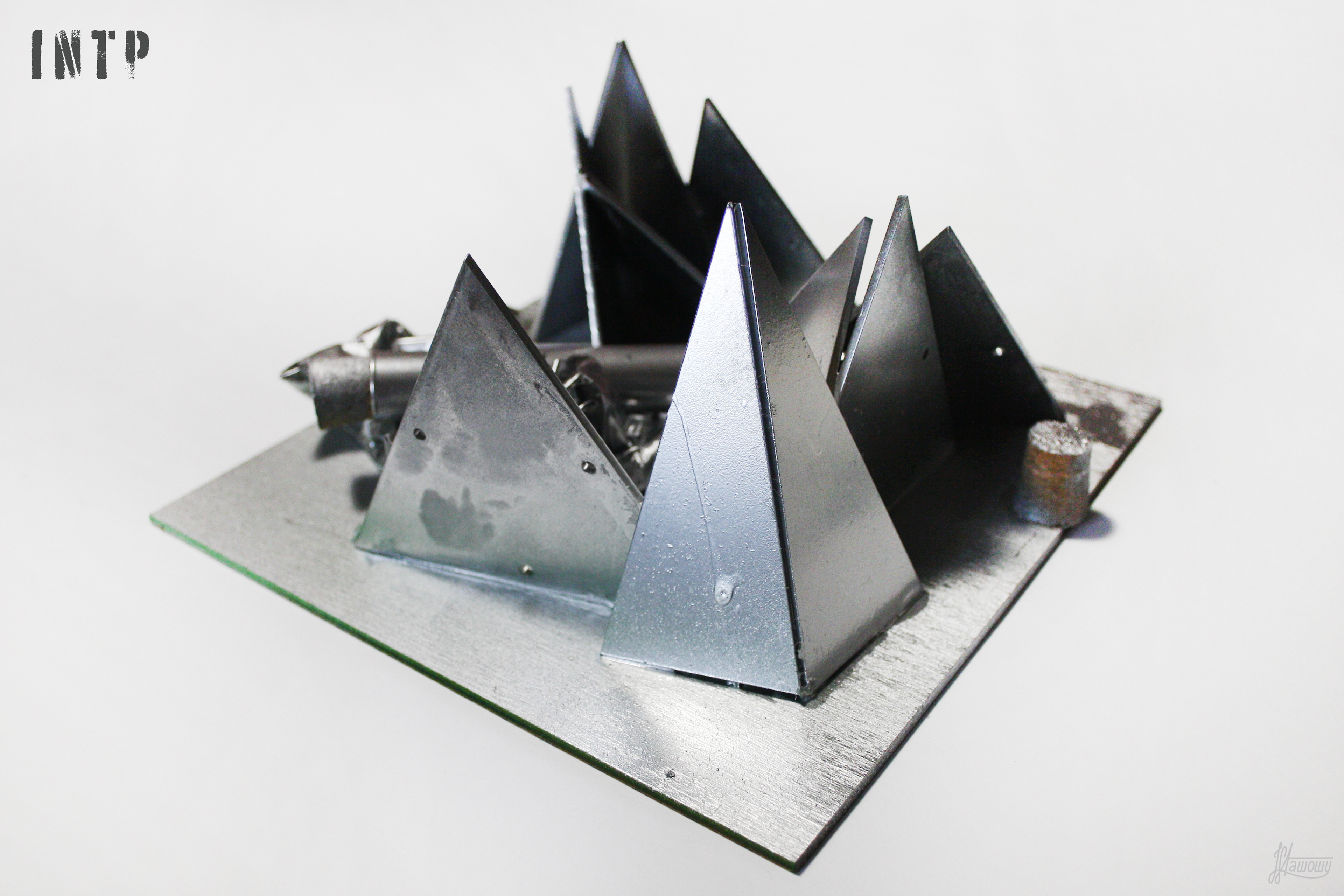
Structures built of seemingly disorganized, triangular shapes symbolize sympathy and ease of understanding abstract concepts and theories.
The test tube in the center of the composition is a symbol of an analytical, logical approach to solving problems (Ti), as is the silver color,
which is associated with metal and also with coolness. The silver foil appeals to the intrinsically soft, secretly sensitive nature of the INTP.
Usually, we don’t care why some colors feel peacefull, while others feel annoying. Subconsciously, we lean towards certain of them, not being able to say what lays behind our choices. The same applies to personality
– in everyday life hardly anyone reflects on why people behave in a certain way. We don’t care why some
of us are more alike than others. We often don’t understand why we like some people while others annoy us.
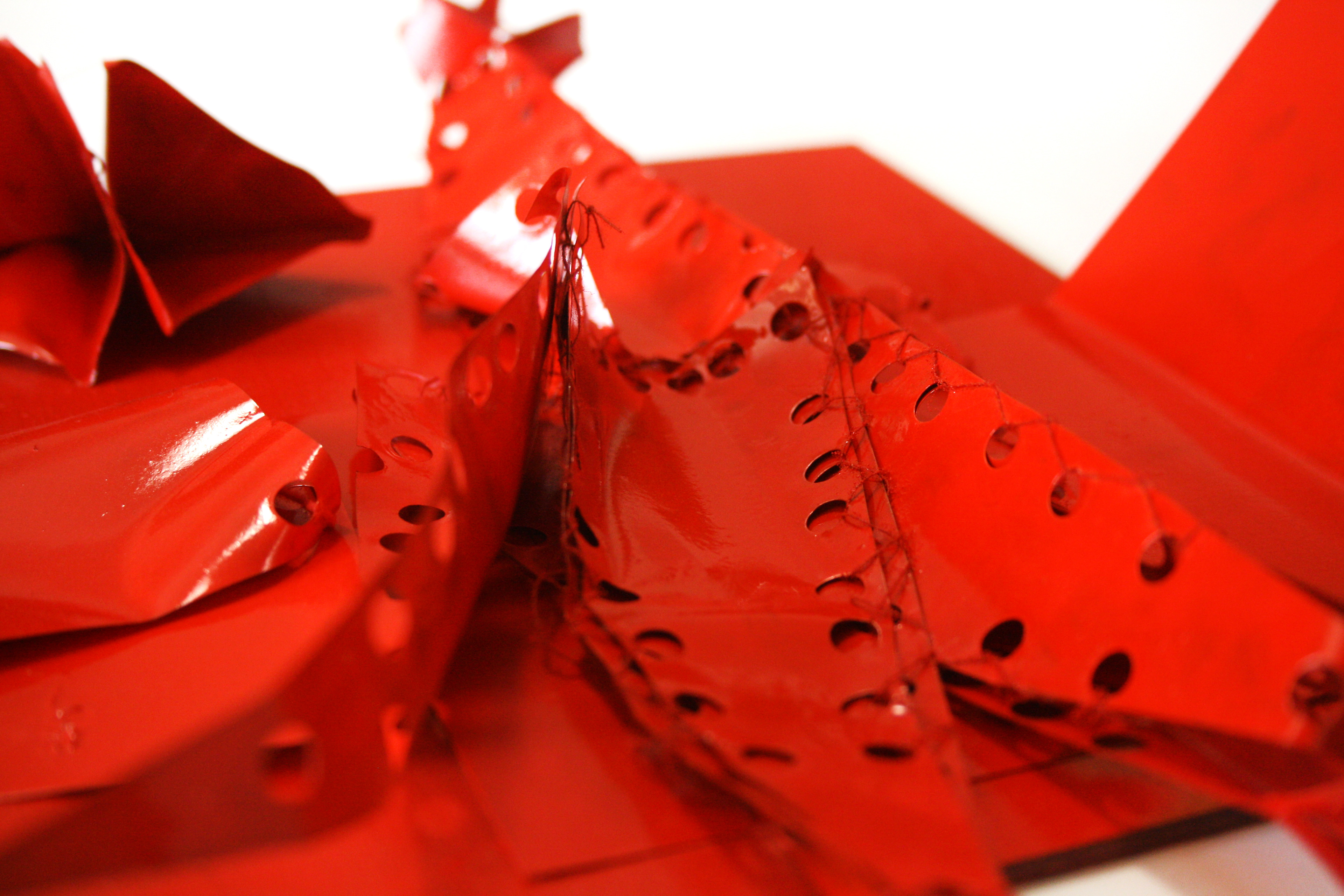
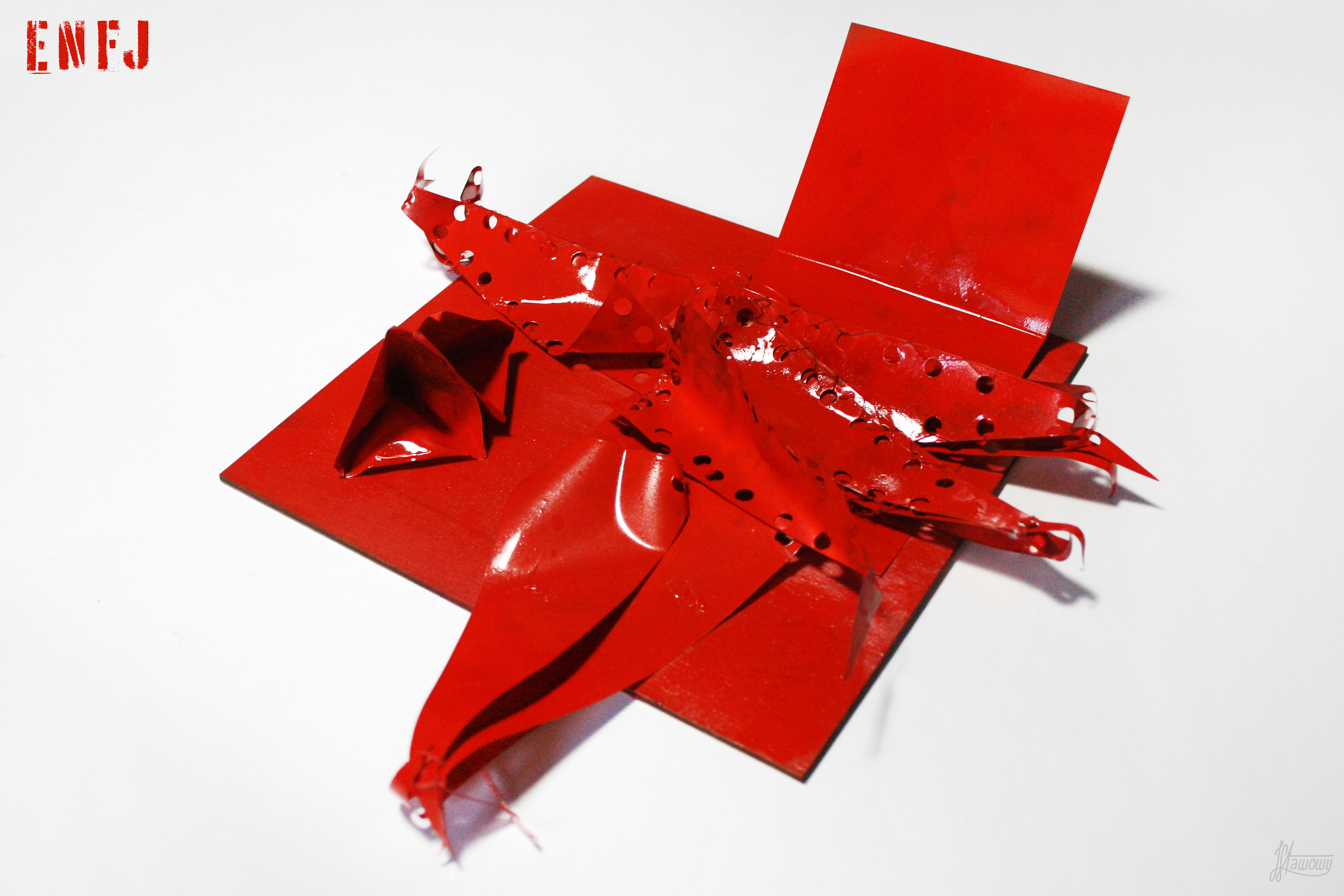
The dynamic composition, composed of metal elements connected with a string into elements that are incomprehensible, but having a certain code, is intended to illustrate the complicated process of ENFJ’s reasoning (Fe Ni). Sharp edges refer to the sharpness of thinking, but also
to hidden stubbornness. Circles cut in metal, similarly spaced apart, refer to the need to control the environment and create it according to one’s own will, in a way that would be good for the group (Fe Se). It also indicates precision (Ti). Red is the color of strong emotions, whether love or anger, or hate, which refers to focusing on feelings and making decisions based on them (Fe). It’s also the color of blood, which is intended to symbolize the surprising stubbornness and toughness of the usually perceived as nice and soft ENFJ.
We’re used to attribute the negative features to those, who seems irritating to us, not understanding that usually our assessment is purely subjective and results from a mismatch in terms of the way we consume energy, collect information about the world, make decisions or organize environment. Knowledge on how our mind works
can help us choose our surroundings more consciously, as well as build understanding and empathy towards
the world around us. The work can be presented in its entirety, but also in parts, consisting of several objects.

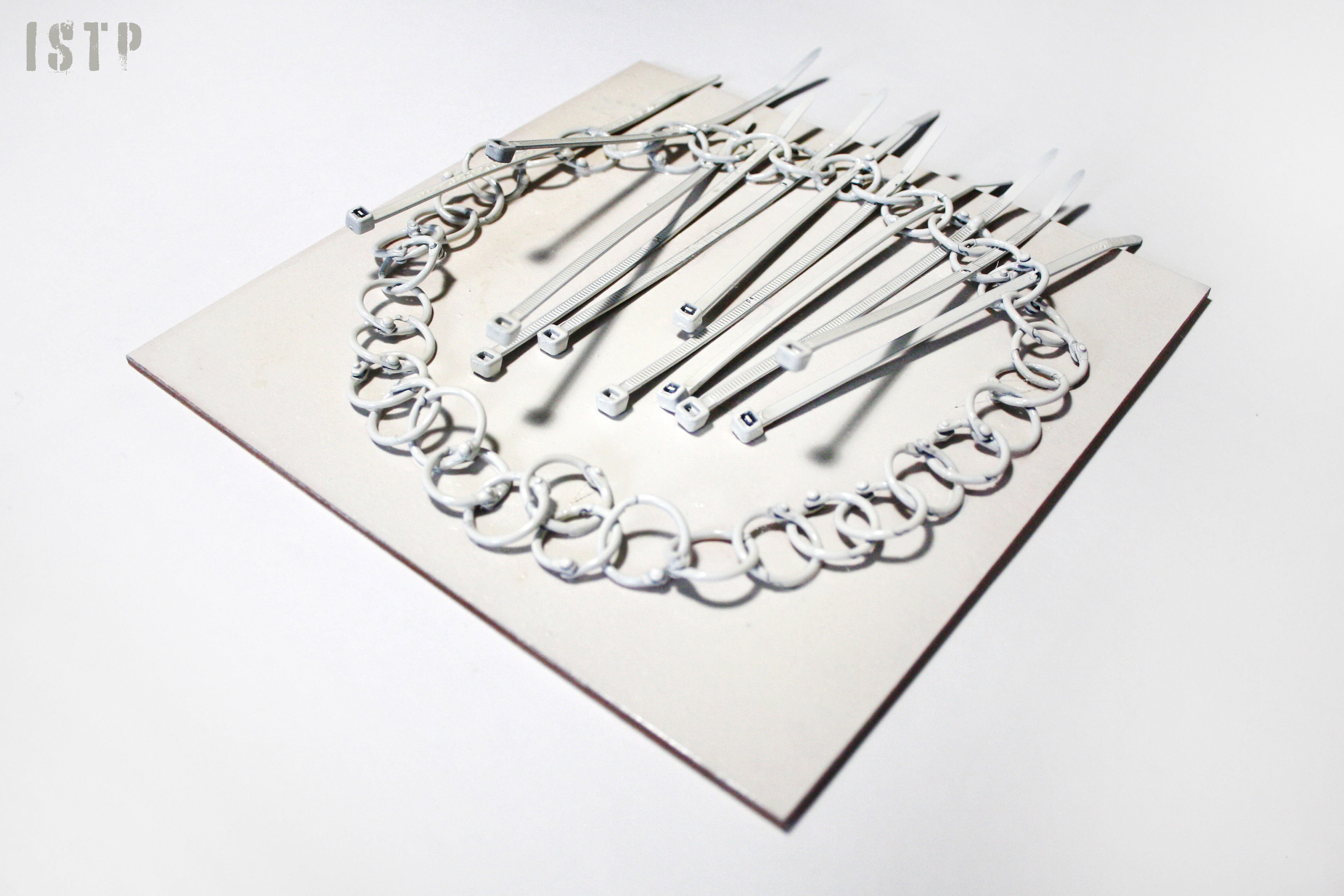
The minimalist composition symbolizes the sparing nature of ISTPs, for whom actions are usually more important than talking about emotions.
The circular arrangement of the chain is interrupted by straight lines of plastic bands, indicating a tendency to break the rules and bravery
(or sometimes recklesness). The chain and plastic bands refer to the ease of analyzing and solving problems of a technical and pragmatic nature. The materials they are made of refer to hardness and logic. White is the color of purity in Western culture, but in the East it is also a funeral color, which is intended to symbolize the dualistic nature of the ISTP.
The ultra-minimalist composition made only of wire symbolizes the strong, combative personality of ENTJ, equipped with strong convictions. The wire used in the artwork is the thickest of the metal elements of the series, impossible to bend with bare hands, just like ENTJs seem to be impossible to bend only with the help of other people’s mental or physical strength – sophisticated shapes were given to it with a bender. The lack of breaks
in the continuity of the wire, its holistic character indicates the specific character of ENTJs, who usually
go through life with a clearly marked out by themselves path, regardless of other people’s assessments.
Chaotic bends symbolize difficulties in expressing one’s own emotions and, sometimes, also understanding
other people’s emotions, rationalizing feelings.

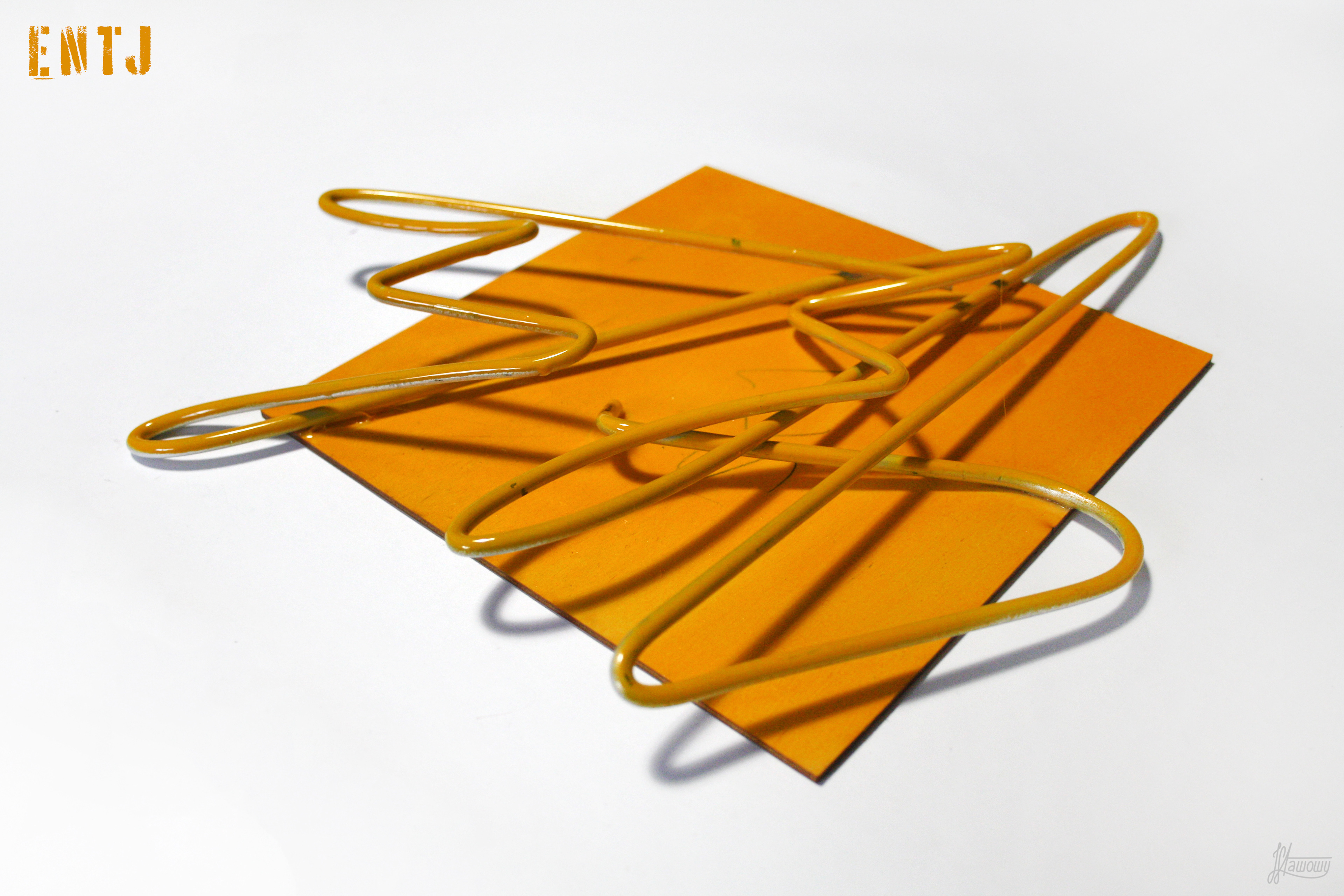
It’s the color of self-confident, brave people, the color that stimulates the brain and improves memory. On the other hand, it’s also identified
with mental disorders and madness, as well as jealousy. Yellow color is usually associated positively, but its excess in the environment
can cause discomfort in some people.
Due to the fact that yellow is usually well noticeable, it’s perfect to draw the attention of anyone nearby
(a warning color both in nature and in urban space – warning road signs, reflective vests).
they lie as if they were scattered rather than arranged, which indicates a concentration of this type of personality on principles, not details - despite their highly organized nature (J), INTJs like see the world from a broader perspective, sometimes they deliberately ignore details to follow a larger, fixed path (Ni). The metal mesh
is a reference to the organized mental structure of this type of personality, the creation of a systematized network of connections between data collected from the environment (Ni), a passion for arranging things and creating minimalist, but aesthetically coherent compositions (Te).
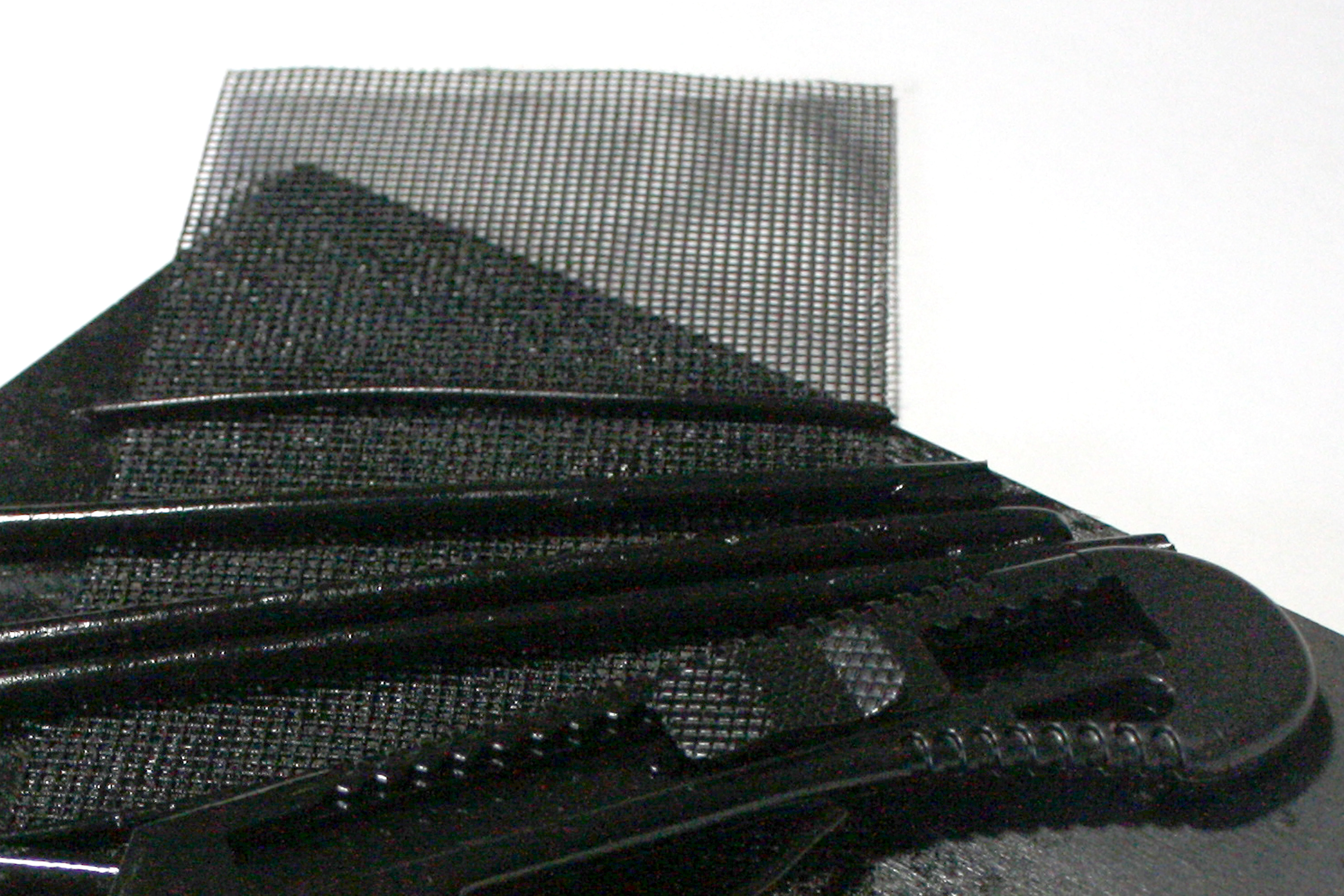

Black and white have opposite cultural meanings – although both are perceived as elegant, they are also associated with the symbolism
of death (in Western culture black is the funeral color, in Eastern culture it is white). Black can be warm or cold depending on the environment
in which it is found, just as INTJs, who usually appear cold, distant and dark, become warm and caring to a small group of people,
who are really important to them.
The plastic knife symbolizes the precision of the cut and the sharpness of the thoughts and words of INTJs,
who are known for their sarcastic, sharp tongue. In combination with the wire cut into pieces, the knife shows
an analytical, willing to cut/break down problems into smaller pieces in order to see the situation from all sides and propose an objective, holistic solution (Ni-Te). The combination of a knife and pieces of wire can also bring to mind the INTJ’s often inconspicuous appearance and their stubbornness – could such an inconspicuous tool as a plastic knife be able to cut a metal wire with the right strength and motivation?


Bright green has an paradoxical meaning – in nature, bright colors serve to deter potential predators, inform about the venomousness
of the individual equipped with them, while green itself is perceived as a soothing color, associated with life-giving vegetation. The shade
of fluorescent green seems to not exist in nature, to be artificial and unnatural – at the same time it is intriguing and emanates with strength.
Despite its apparent unnaturalness, green of this type occurs in nature in the form of, for example, uranium compounds or bioluminescence
(which gives ESTP in this approach only additional, interesting meanings).
The ESTP artwork is composed of depicting, realistic elements (S). The jaw cast pieces symbolize the five human senses, thus referring to the highly experience-focused nature of ESTP (Se). The detail of the casts indicates the ability to notice changes in reality that are elusive for other personality types – ESTP will easily notice subtle changes in the expression of the interlocutor’s face or a changes in the interior design.
Seemingly trivial office clips (because they are sometimes used by students of the art department to hold
large sheets of paper to boards, and in their original purpose they are used, among others, to organize office work by fastening segregated documents together) symbolize a high sense of aesthetics which, although
not usually associated with ESTP, often accompanies this type of personality.
not usually associated with ESTP, often accompanies this type of personality.

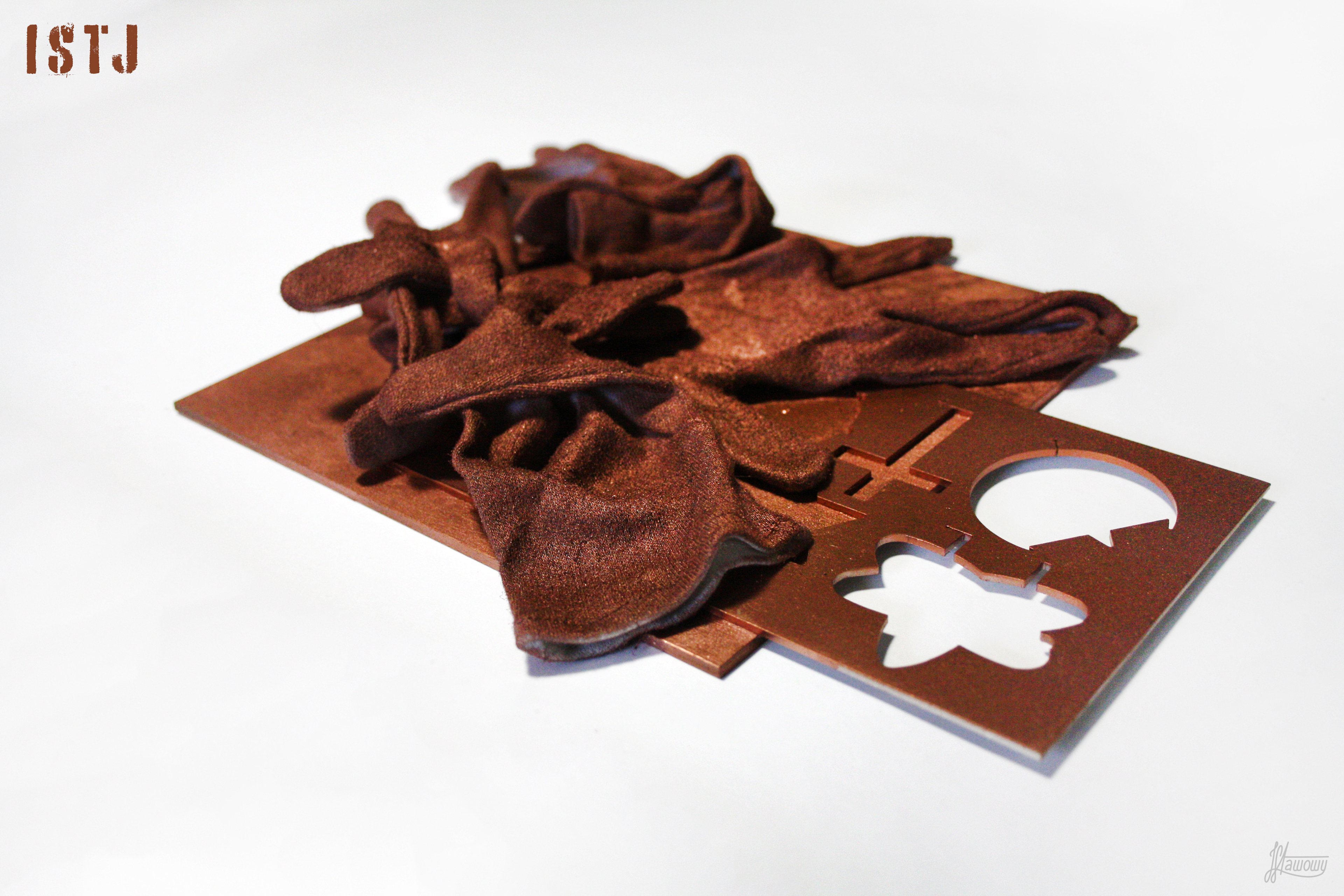
At the same time, copper, as a metal characterized by high plasticity and the only metal that is covered with verdigris (patina) over time,
symbolizes that the seemingly unchanging, fierce in its views ISTJ also sometimes changes over time, especially if he sees logical
explanations for change and novelty (Te).
The arranged structure (T/Ti) is disturbed by an abstract metal element resembling a section of a network
of connections, some incomprehensible structure (N/Ni). The sparing composition of ISTJ artwork, made
only of a metal plate and a few gloves, indicates a tendency to simplify and catalog information, to create clear divisions that don’t take into account intermediate situations (Te). The gloves intertwined in a chaotic pose refer to the distance in interpersonal contacts and difficulties in opening up to other people (Fi), while following
the usual etiquette, such as shaking hands or using polite expressions (Si) – the glove separates the hand
from the hand of another person, it’s also a symbol of elegance and many situations related to history/culture.

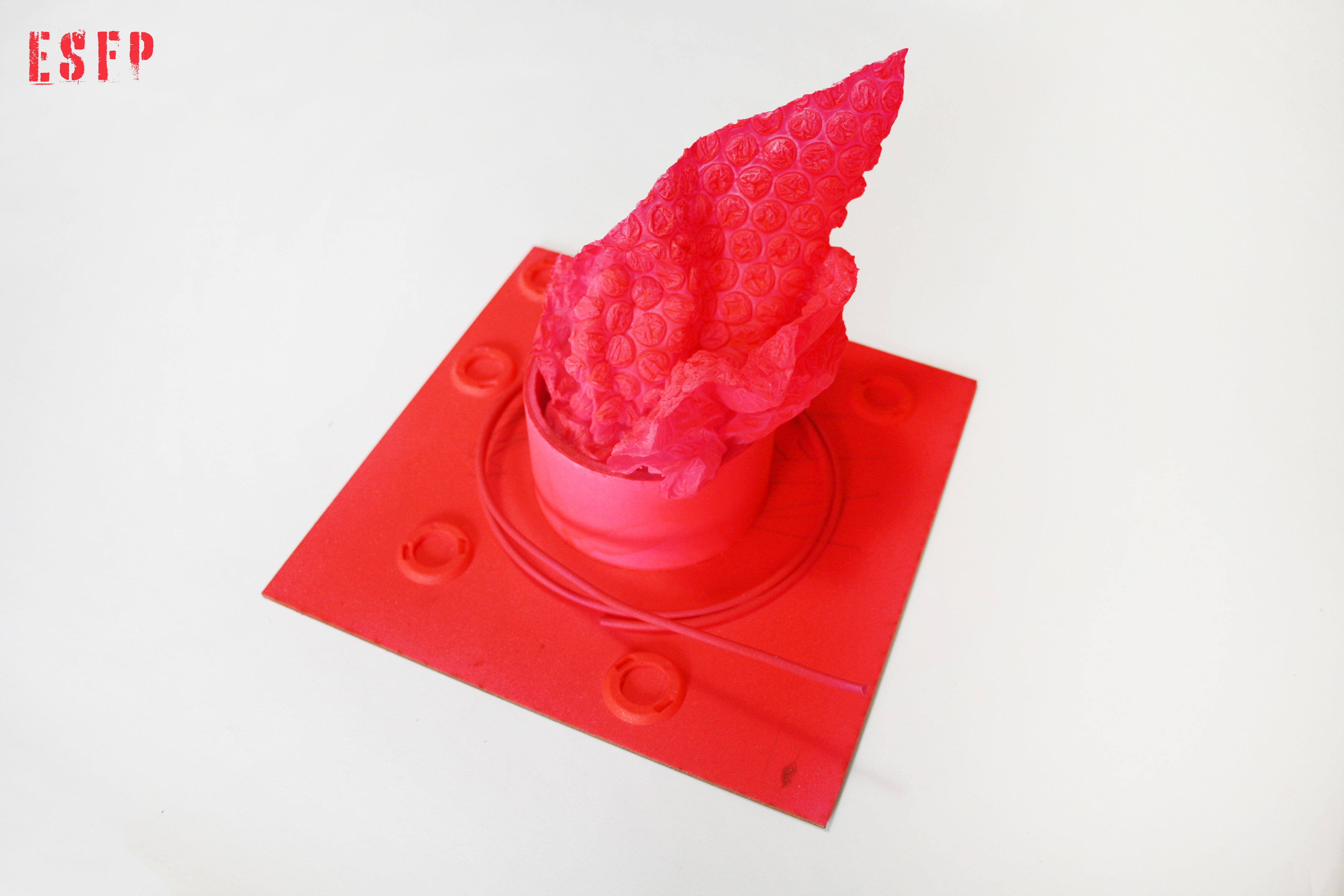
Unnatural, bright, neon pink symbolizes the large amounts of energy. The choice of a warm color (opposite to ESTP) indicates
concentration on emotions and feelings, and making decisions based on them (Fi).
In the early Middle Ages, gloves became part of the coronation and liturgical attire of kings and bishops, began to be considered a symbol of dignity and power. A metal plaque with cut-out symbols of the largest religious systems and atheism indicates the great respect that ISTJs have for tradition, and at the same time the difficulty of breaking away from them and the frequent reluctance to change the existing paradigms (Si).
Throwing the glove is provoking someone to react, fight, compete, polemic – ISTJs who value peace (I) rarely enter into open confrontations, but they are never afraid of them, and when someone offends their internal value system (Fi) they’re able to challenge him to a duel, defending their honor (or someone important to them)
and knightly dignity.
to disorganization (P). Bubble wrap is a symbol of fun and lightheartedness. A metal rod bent into a circle refers to the ability to logically analyze problems and solve them in a concrete way, which, although not identified
with ESFP, lie dormant inside them (Te).
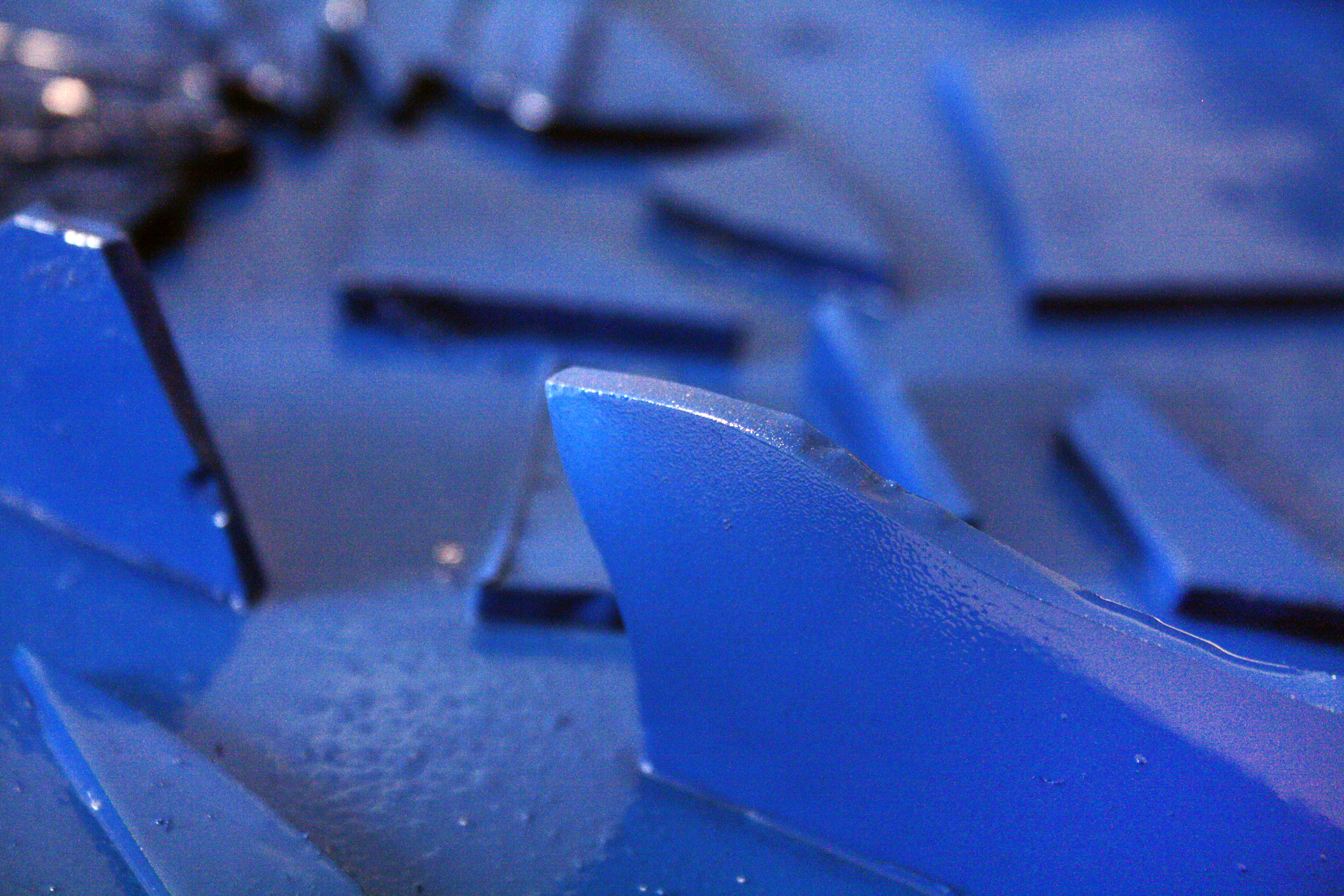
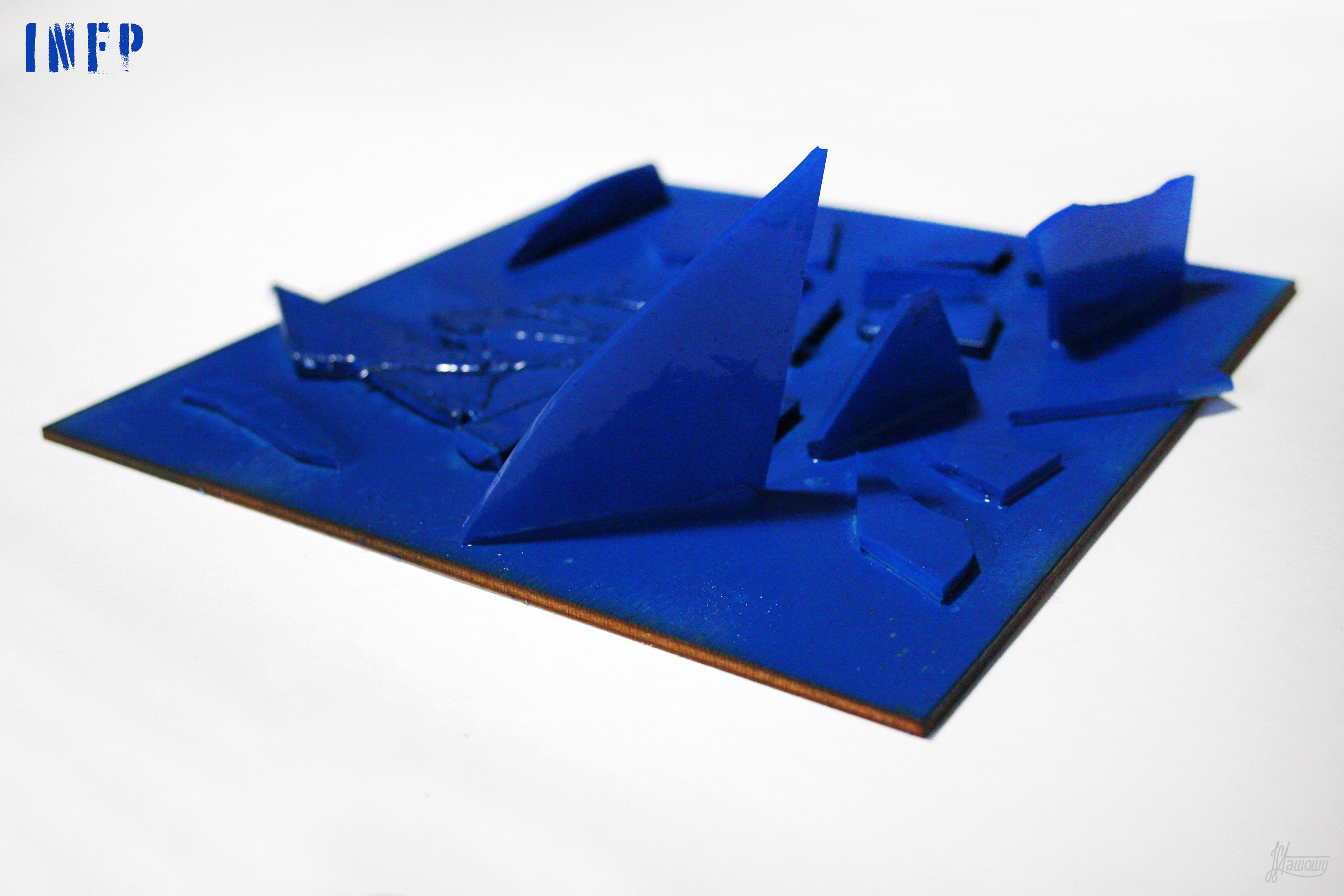
Broken glass forms sharp edges that are sometimes easy to cut, as does the internally concrete, logical, result-oriented mind of the INFP (T/Te). Blue is the color of peace and sadness. It is soothing and natural, pleasant to the eye (blue sea, ocean, sky), and staying in it reduces stress.
The INFP composition made of glass and partly demolished, indicates the quiet, but at the same time full
of storms and storms nature of the INFP (I). The glass is delicate, it is easy to break, which symbolizes
sensitivity to the world and other people (F/Fi). At the same time, broken pieces can be used to build
something beautiful, which in turn refers to creativity and the ease of generating abstract ideas (N/Ne).
The minimalist INFJ artwork, composed of two types of elements (J) – an abrasive sponge and five antique
columns, each of a different order (Doric, Corinthian, Ionic, Tuscan, Composite).

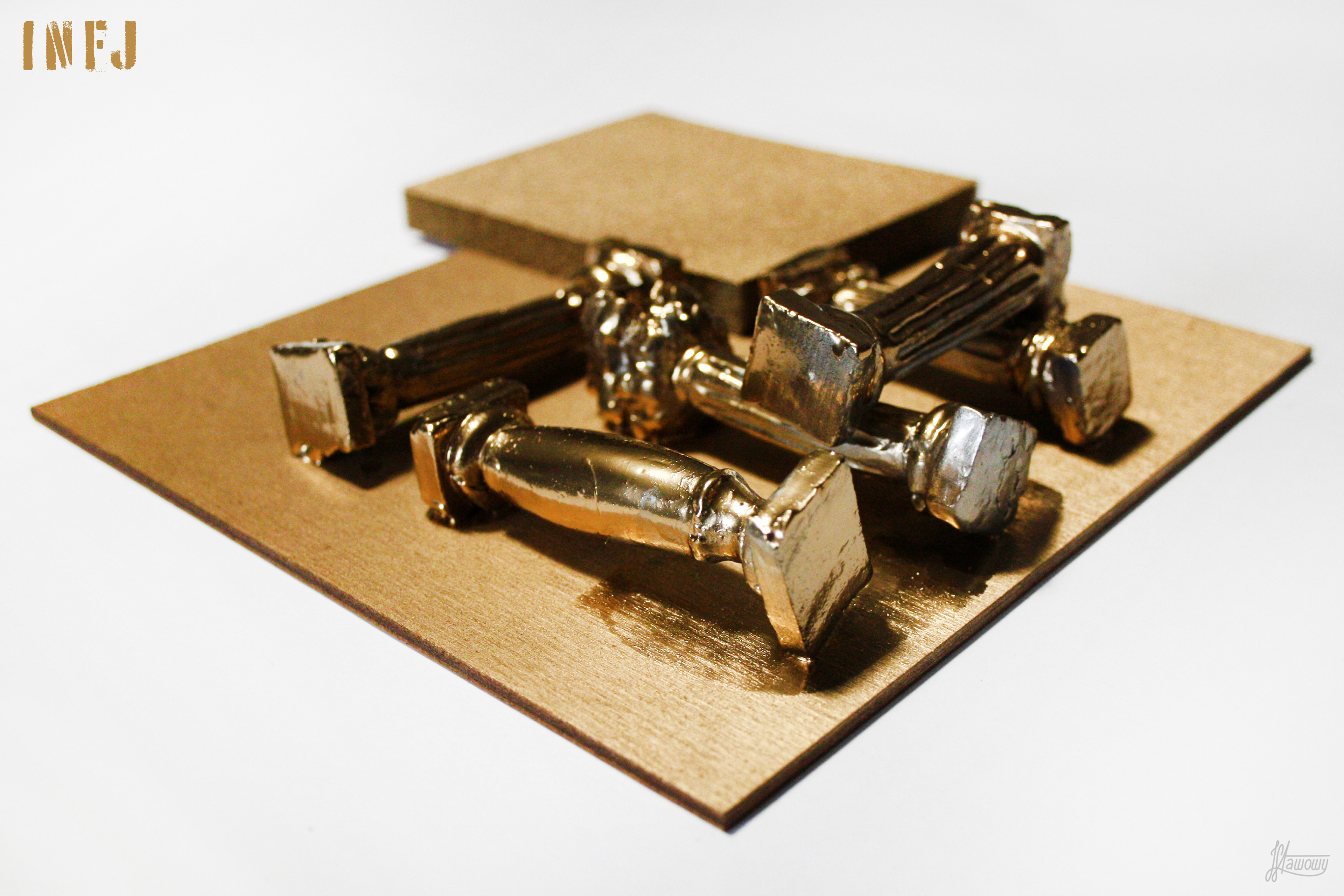
At the same time, the abrasive sponge indicates a secretly hardy and rough character of this type – INFJs are considered generous and kind,
but they are not weak and do not bend to every request or coercion; they can be rough when needed. The sponge also symbolizes the logic behind the INFJ’s behavior, their tendency to coolly analyze the facts (Ti), despite making decisions mainly based on feeling (Fe).
Gold is synonymous with nobility and wealth, and in the case of INFJ also generosity to others (Fe). It’s also the color of royalty,
associated with power and wealth. It can be associated with hedonism (Se).
The columns symbolize respect for history, traditions and human rituals (Fe) – despite their future-oriented (N) and introverted nature (I), INFJs often perform most of the minor everyday rituals established by the culture
in which they are brought up, fitting in with the group to which they belong (Fe). Additional value is added
by the fact that the columns are handmade, from clay – on the one hand, it's a reference to the INFJ’s respect
for human work, on the other hand, it symbolizes the effort they put into the commitments they undertake, regardless of whether they concern their career or relationships with other people.

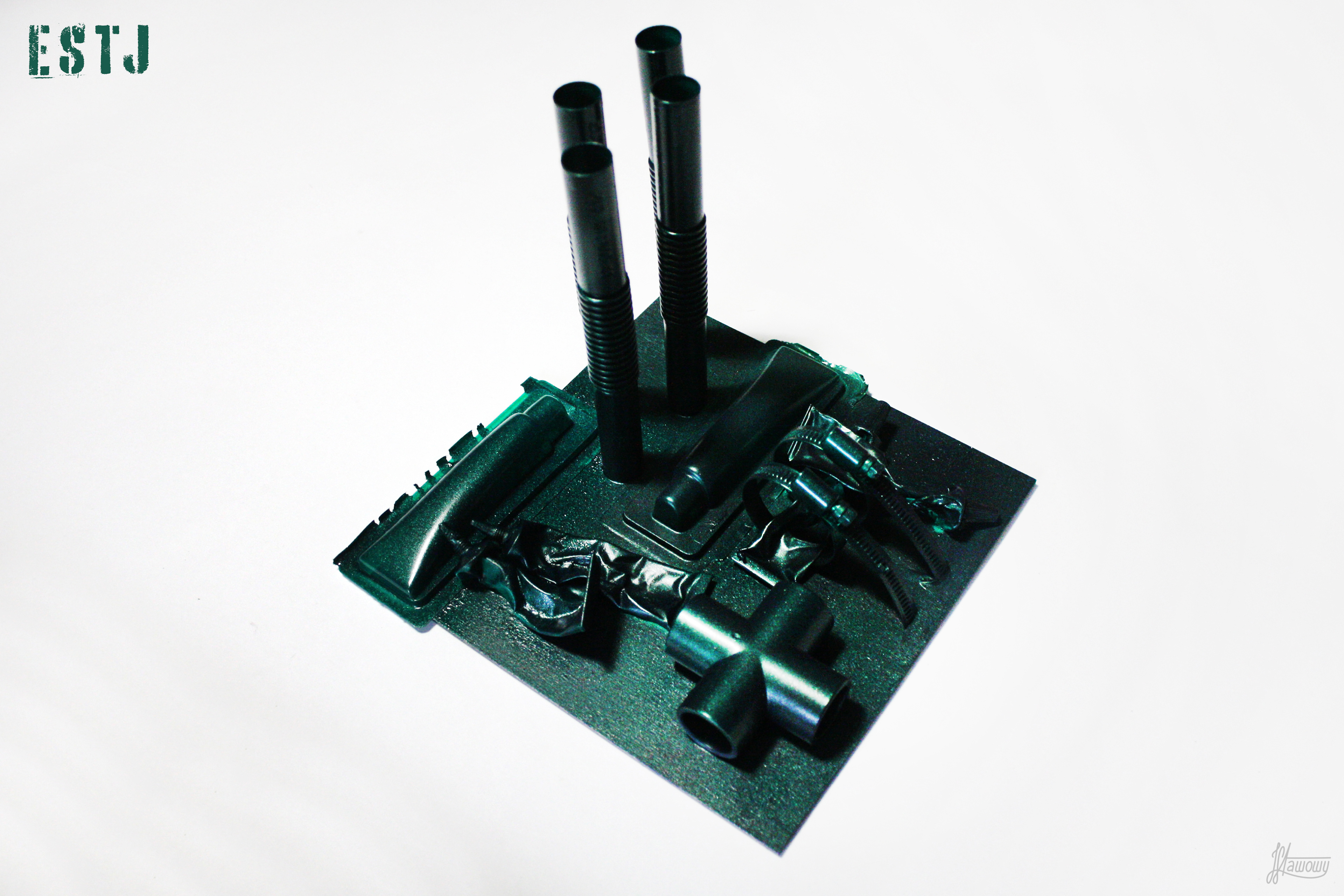
Deep green is a natural, eye-friendly color that provides peace and a sense of comfort – the gigantic organizational skills of ESTJs provide their loved ones with a sense of security, being well taken care of, they're also salutary in the workspace. When they’re too high, ESTJ can stress people around them, but when they’re optimal, ESTJs bring to the space they find themselves in invigorating and necessary order.
Most of the elements of the composition are well organized, the whole space is filled, the composition seems
to be static except for the element extending beyond the edge, which (as well as the crushed, quite chaotic
in that organized composition tubes of glue) symbolizes the ESTJ’s tendency to break the rules, if ESTJ
believes they are illogical and stupid. Tall, cylindrical elements refer to the multi-level nature of ESTJs,
usually paradoxically portrayed as shallow and bossy – lying in fourth place Fi makes ESTJ people with a strong internal moral code and beliefs, who will do anything to fulfill their duties.


Violet stimulates the imagination and creativity. It is also the color of the monarchy, the most difficult to obtain by natural methods,
and therefore the most expensive. Light purple is often used in beauty products because of the calmness and sense of harmony it brings.
Also despite a strong Te and leadership of ESTJ tendencies they’re also strongly connected with people,
whom they respect, their loved ones and willing to sacrifice a lot for them.
In this way, he refers to the nature of ISFP focused on one’s own interior and emotions (Fi).

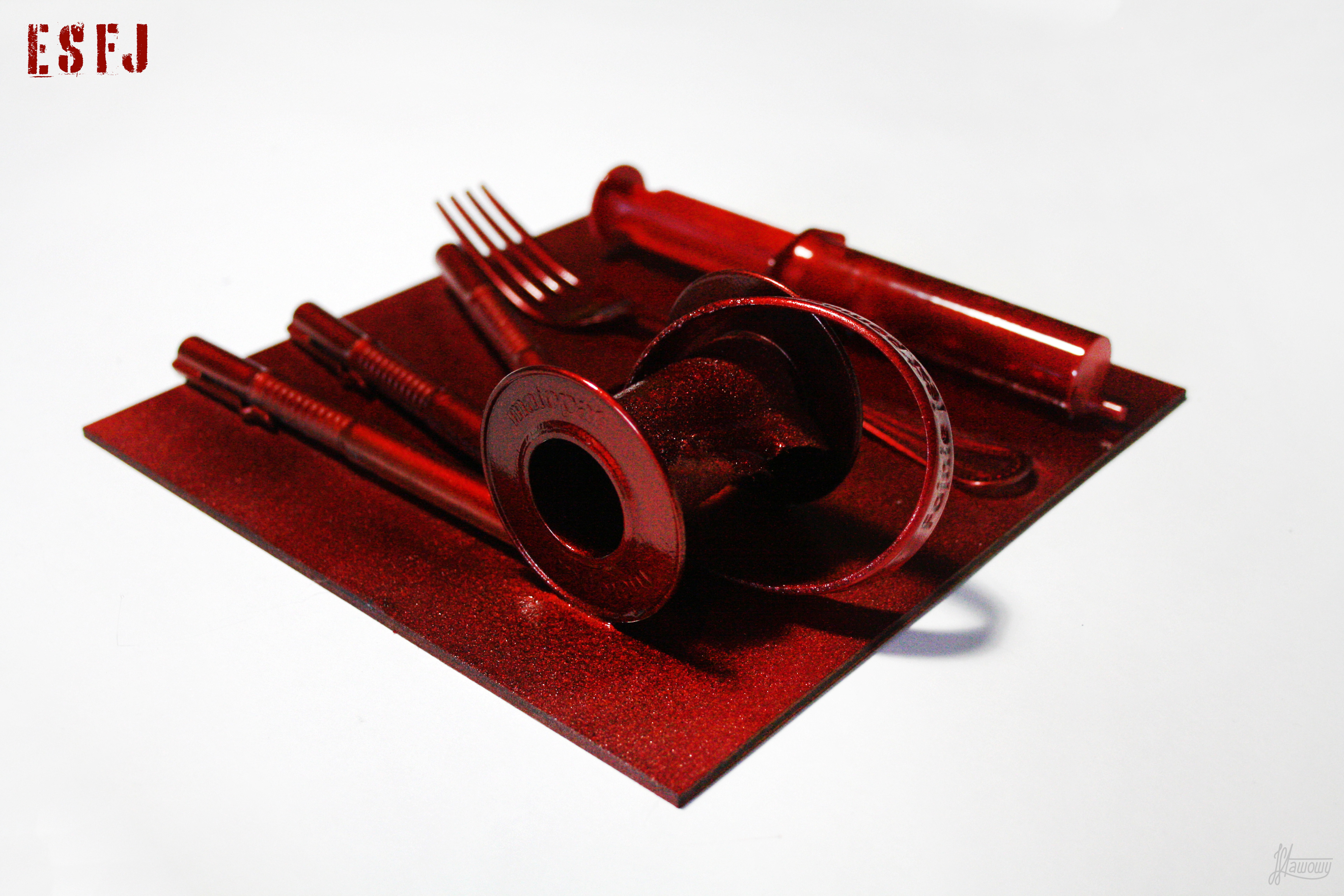
Blood may be a reference to one of the four personality types according to Hippocrates, the sanguine that seems
to be most common among cheerful, extroverted ESFJs. Also metallic red is a warm color, opposite to ESTJ’s green.
The presence of a fork symbolizes generosity. A syringe and a bandage for dressings, identified with the health service, mean a willingness to help and a willingness to make sacrifices for others, on the rubber band stuck around it is written “it’s nice to help”. The fineliners refer to the surprisingly frequent artistic abilities of ESFJs, who usually place great value on the aesthetic qualities of things and have good taste. Red is the color of blood, passion and strong emotions, in the case of ESFJ it is a warm, metallic red, which is intended to emphasize
the nature of this type ready to sacrifice for others at the expense of yourself.
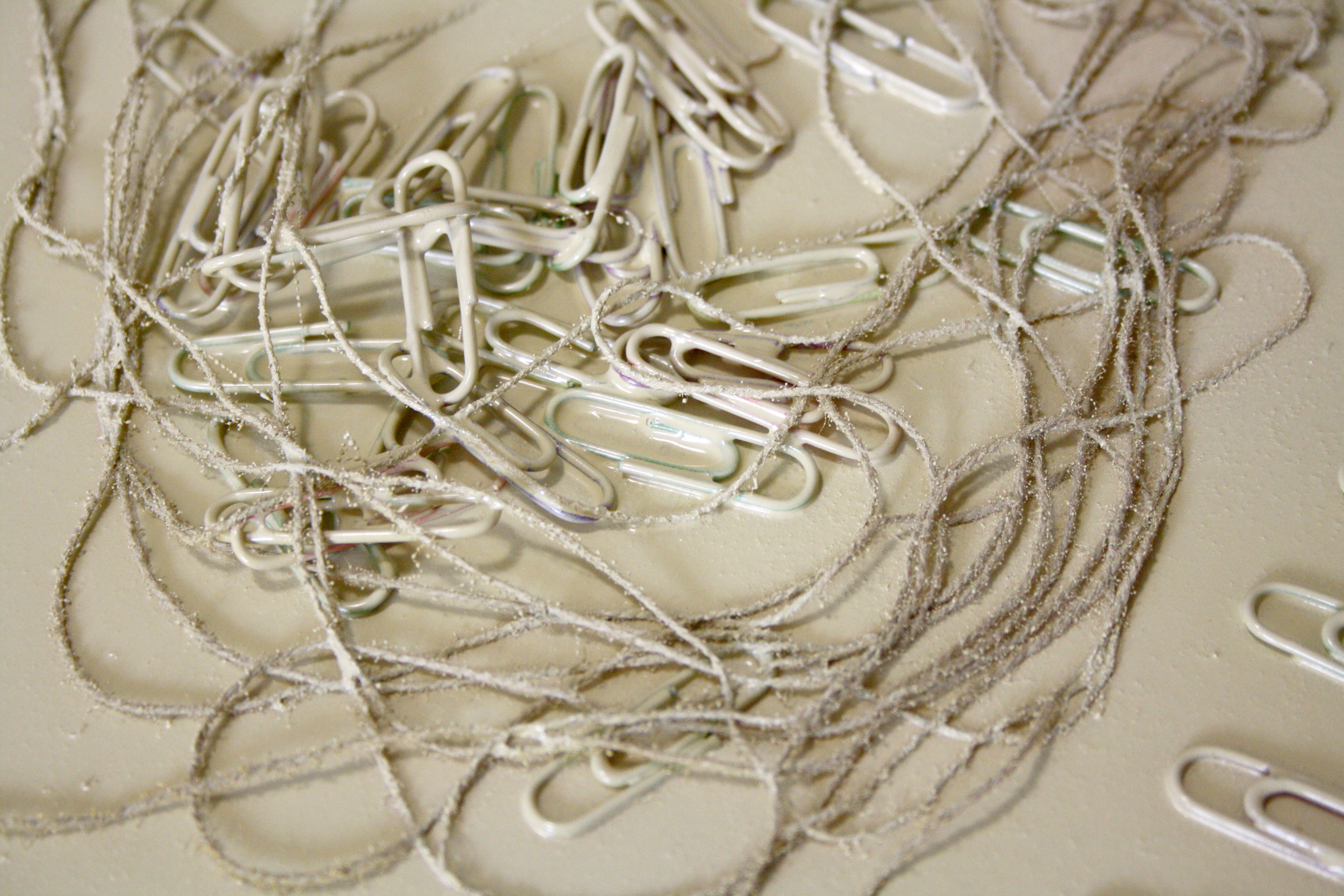
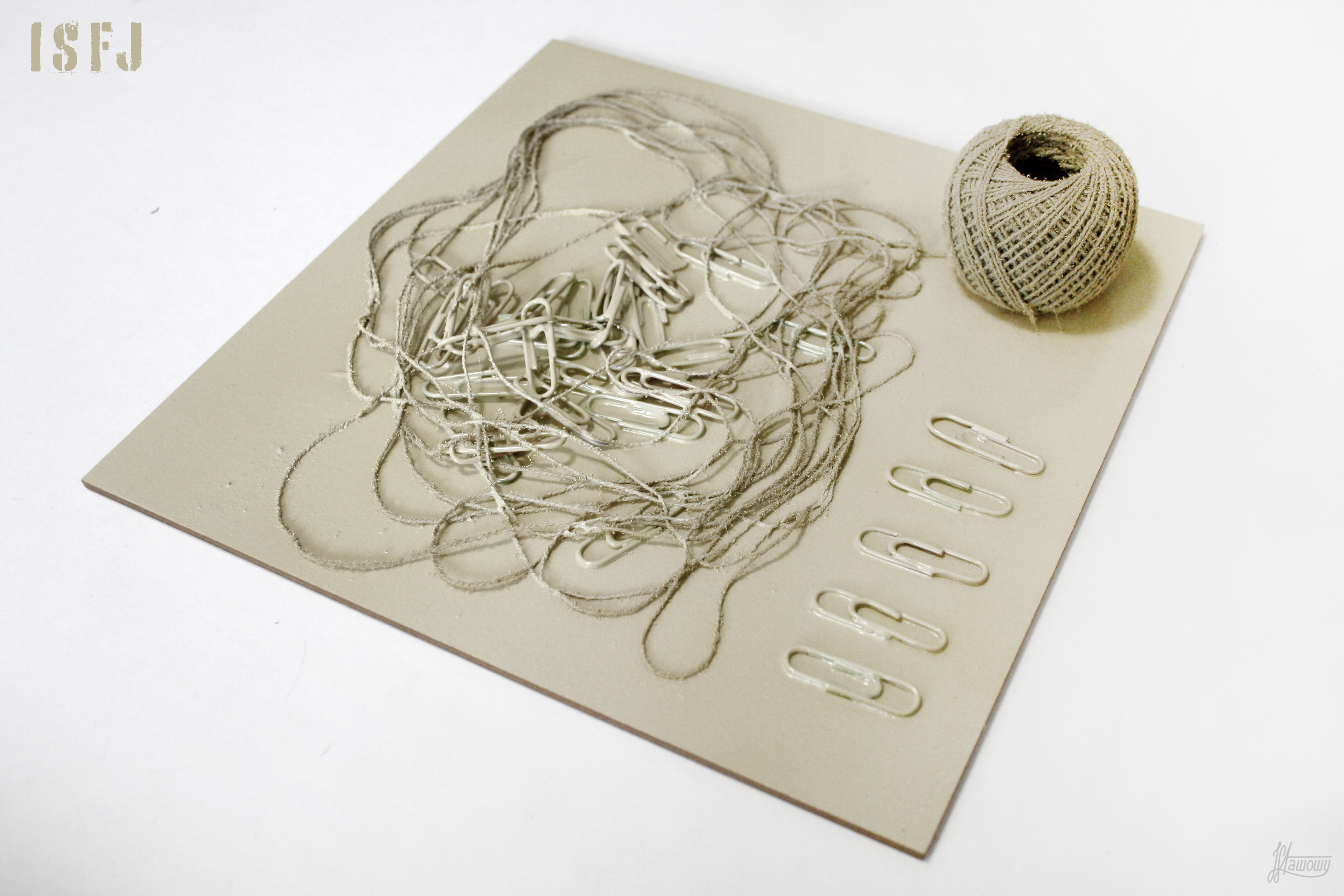
The paper clips arranged in one line in the corner of the composition symbolize order and a tendency to like routine, ease of finding oneself
in situations and places that are hierarchical. Light beige is pleasing to the eye. It’s also a great base for other color accents, due to its delicacy
and neutrality, it fits most colors.
The thread appears in two forms: in the center of the composition it’s chaotic and unraveled, in its corner
the thread is arranged, rolled into a skein, which refers to the emotional, feeling-focused nature of ISFJ
and acting according to what one feels (F/Fe). Paper clips thrown into the threadlike space symbolize clumps
of metal that are hard to swallow for those who consider the ISFJ being week – because Fe is a function called by Jung rational (meaning that it not only perceives reality, but also evaluates it, submits it to judgment)
usually nice and kind ISFJs can get their way and have very strong, unbreakable beliefs about a given topic, which they aren’t usually associated with.
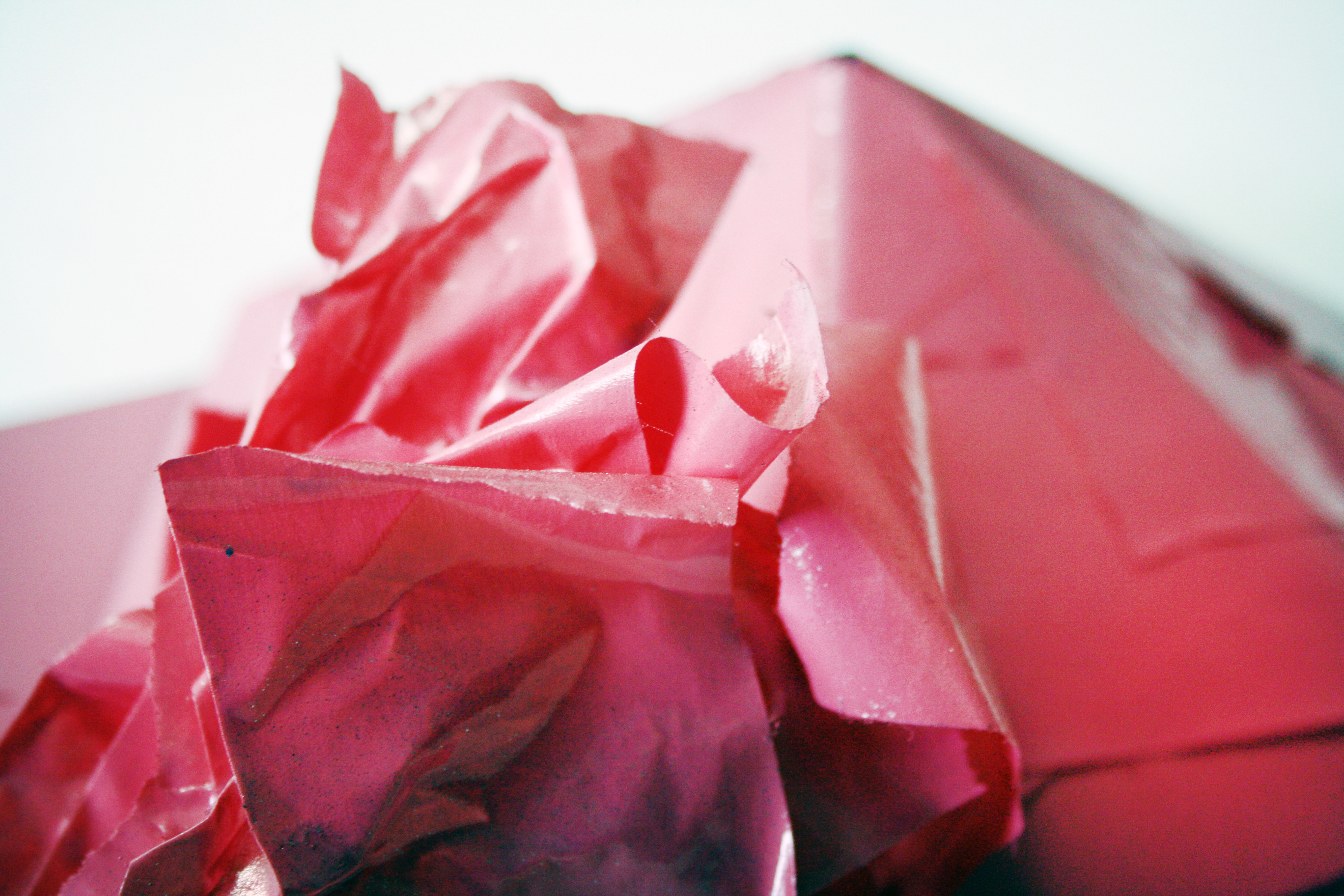
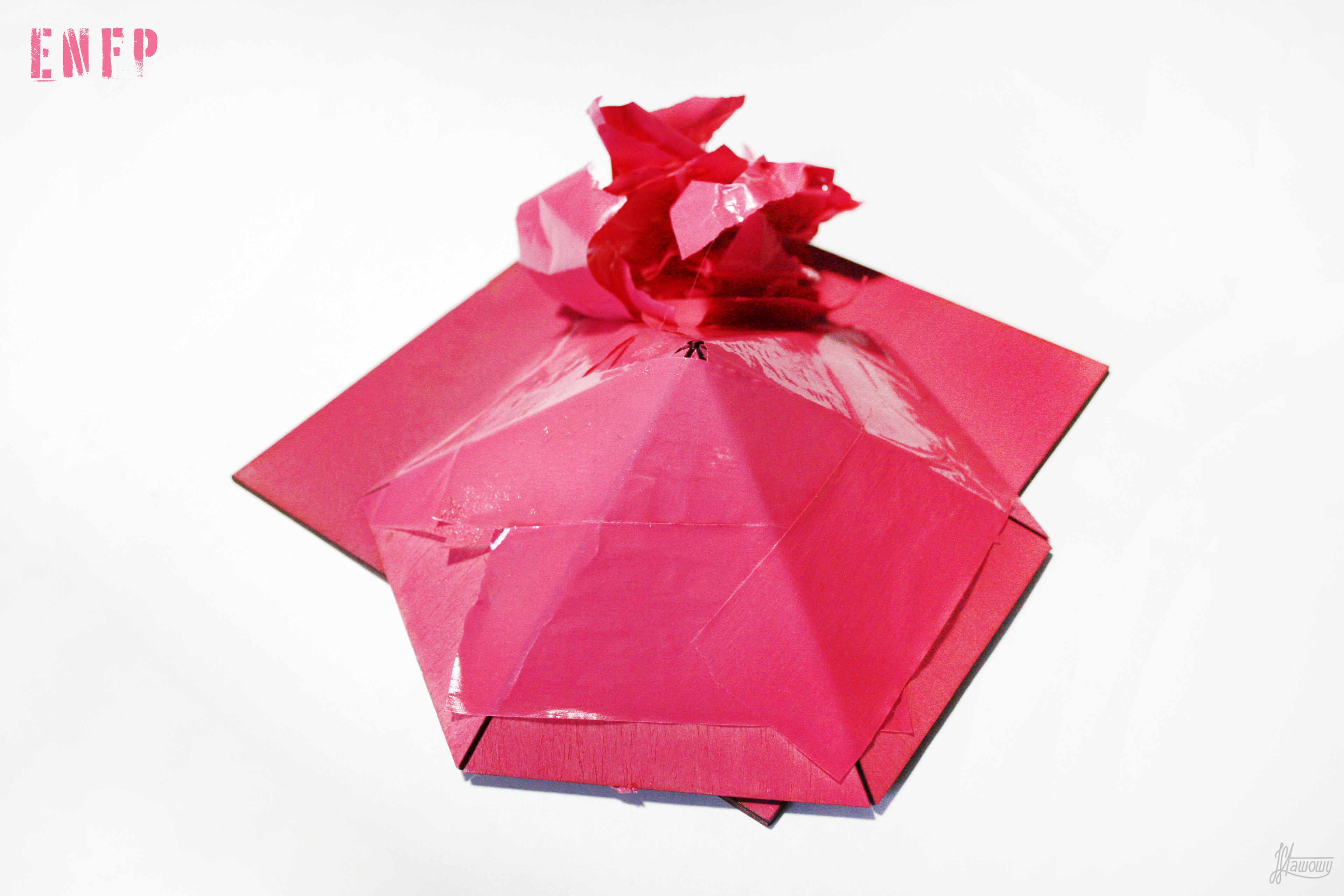
A large, triangular building composed of wooden elements, the dominant feature, is a reference to generating a large number of abstract ideas (Ne). Pink is an energetic and warm color, which is identified with love, trust and hope (F/Fi).
The asymmetric, diagonal, border-crossing composition symbolizes originality, originality, sympathy
for novelty (N/Ne). Chaotically folded duct tape is a symbol of lack of organization, doing things
at the last minute, which sometimes happens to ENFPs (P). At the same time, this element doesn’t
dominate the composition, because despite the chaotic nature, ENFPs are conscientious people,
who fulfill their duties very well.


Gray is a neutral color, it symbolizes the need for balance and calm without manifesting feelings outside. It’s sometimes the color of hidden emotions, improves communication and means opening to substantive, emotionless discussion.
Geometric figures indicate the nature that likes and easily understands abstraction (N). The chaotic composition is intended to emphasise the dispersal and the ability to multitask (Ne), but the beginnings of a building
can be found in it, which alludes to the ease of starting projects and combining seemingly unconnectable elements into structures (Ti). Metal caps symbolize a logical, mentally focused personality,
not willing to talk about emotions unless it is their analysis (Ne Ti).










